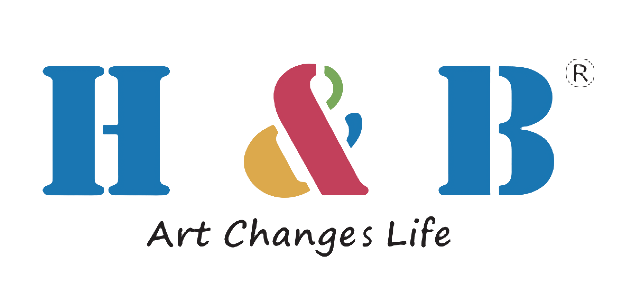Artists today have unprecedented access to diverse materials and techniques, opening doors to innovative creative expression through mixed media drawing. This artistic approach combines traditional and contemporary mediums to create unique, layered compositions that captivate viewers and challenge conventional boundaries. By integrating acrylic paint with pencils, charcoal, pastels, and other drawing tools, artists can achieve depth, texture, and visual interest that single-medium works often cannot match.
The versatility of acrylic paint makes it an ideal foundation for multimedia artworks. Its quick-drying properties allow artists to layer additional materials without extended waiting periods, while its adhesive qualities help bind various elements together. Understanding how different mediums interact with acrylic paint is crucial for successful mixed media drawing projects that maintain structural integrity and visual coherence.
Contemporary artists increasingly embrace mixed media techniques to express complex ideas and emotions that require diverse textural elements. This approach allows for spontaneous creativity while providing structure through planned layering sequences. The combination of wet and dry mediums creates opportunities for both controlled precision and expressive spontaneity within the same composition.
Foundation Techniques for Acrylic and Drawing Medium Integration
Preparing Surfaces for Multiple Mediums
Successful mixed media drawing begins with proper surface preparation that accommodates both paint and drawing materials. Canvas boards, heavyweight watercolor paper, and prepared wood panels provide excellent foundations for multimedia work. The surface texture significantly affects how different mediums interact, with tooth providing grip for dry materials while smooth areas allow paint to flow freely.
Priming techniques vary depending on the intended medium combination. Acrylic gesso creates a versatile base that accepts both paint and drawing materials effectively. Some artists prefer applying multiple thin coats of gesso, sanding between applications to achieve specific textures. This preparation phase determines the final artwork's archival quality and visual characteristics.
Temperature and humidity control during the preparation phase ensures optimal material adhesion and prevents cracking or separation as the artwork develops. Professional artists often work in climate-controlled studios to maintain consistent conditions throughout the creative process, particularly when combining materials with different expansion and contraction rates.
Layering Strategies for Visual Depth
Strategic layering creates visual depth and complexity in mixed media drawing compositions. Beginning with transparent acrylic washes establishes color harmony while allowing subsequent layers to show through. This foundational approach provides unity throughout the piece, even as diverse materials are introduced.
Alternating between wet and dry applications creates interesting textural contrasts. Applying charcoal or graphite over dried acrylic creates rich, velvety blacks that cannot be achieved with paint alone. Conversely, glazing thin acrylic layers over pencil work adds luminosity and color depth while preserving linear details.
Understanding opacity levels helps artists plan effective layering sequences. Opaque materials should generally be applied over transparent ones, though creative exceptions can produce unexpected and appealing effects. Experimentation with different application orders helps develop personal techniques and signature styles.
Specific Medium Combinations and Techniques
Acrylic Paint with Graphite and Charcoal
Combining acrylic paint with graphite and charcoal creates dramatic contrasts between smooth painted areas and textured drawn sections. Charcoal responds differently to various acrylic formulations, with heavy-body paints providing more tooth for charcoal adhesion than fluid acrylics. This interaction allows for selective emphasis and visual hierarchy within compositions.
Compressed charcoal works exceptionally well over dried acrylic surfaces, creating intense blacks that can be manipulated with erasers and blending tools. Vine charcoal offers more delicate effects, perfect for subtle atmospheric passages. The key lies in understanding how different charcoal types interact with various acrylic textures and sheens.
Graphite pencils complement acrylic paint beautifully, especially in portrait and still-life work where precise detail is essential. Harder graphite grades work well over smooth acrylic surfaces, while softer grades require more textured paint applications for optimal adhesion. This combination allows for photorealistic rendering capabilities within abstract or expressionistic painted contexts.
Incorporating Colored Pencils and Pastels
Colored pencils add precision and vibrancy to acrylic paintings, particularly in areas requiring fine detail or color gradations. Wax-based colored pencils work well over matte acrylic finishes, while oil-based pencils adhere better to slightly textured surfaces. The key is matching pencil characteristics to the underlying paint surface properties.
Soft pastels create ethereal effects when combined with acrylic paint, particularly for atmospheric backgrounds and transitional areas. The dusty nature of pastels requires careful fixative application to prevent smudging while maintaining color intensity. Strategic placement of pastel areas can soften hard acrylic edges and add warmth to cool color schemes.
Oil pastels provide different possibilities, offering rich, buttery textures that contrast beautifully with crisp acrylic passages. These materials can be manipulated with heat or solvents to create unique textural effects impossible to achieve with paint alone. The waxy nature of oil pastels creates interesting resist effects when combined with subsequent acrylic applications.

Creative Applications and Artistic Styles
Abstract Expressionist Approaches
Abstract expressionist mixed media drawing emphasizes emotional content over representational accuracy, using material combinations to convey feeling and energy. Large gestural acrylic passages provide emotional foundation, while drawing materials add linear elements that guide viewer attention and create rhythmic patterns throughout the composition.
Spontaneous mark-making with various drawing tools over wet or dry acrylic creates unpredictable effects that enhance expressive content. Artists often work intuitively, responding to emerging forms and textures as they develop. This approach requires confidence and willingness to embrace happy accidents as integral parts of the creative process.
Color interaction between painted and drawn elements becomes crucial in abstract work, where formal relationships carry the primary visual message. Understanding how different materials affect color temperature and intensity helps artists make informed decisions about material placement and layering sequences.
Realistic and Hyperrealistic Techniques
Photorealistic mixed media drawing requires precise control over material interactions to achieve seamless integration between painted and drawn passages. Acrylic paint establishes color foundations and broad value patterns, while drawing materials add fine details, textures, and subtle modeling that enhance three-dimensional illusion.
Hyperrealistic artists often use acrylic paint for smooth, reflective surfaces like metal or glass, then add scratches, wear patterns, and fine details with graphite or colored pencils. This combination allows for both broad color application and microscopic detail work within the same composition, achieving levels of realism impossible with single mediums.
Careful attention to surface preparation becomes critical in realistic work, as any texture inconsistencies become apparent under close examination. Artists working in this style often spend considerable time perfecting their surface preparation techniques and material compatibility understanding.
Technical Considerations and Best Practices
Material Compatibility and Permanence
Understanding archival properties of different material combinations ensures artwork longevity and prevents deterioration over time. Acrylic paint generally provides excellent permanence, but some drawing materials may fade or change color when exposed to light or environmental conditions. Testing material combinations on sample pieces helps identify potential issues before committing to final artworks.
pH compatibility between materials affects long-term stability, particularly when combining organic and synthetic materials. Acidic papers or drawing materials can cause yellowing or brittleness over time, while alkaline conditions may affect certain pigments. Professional-grade materials generally offer better compatibility and longevity than student-grade alternatives.
Fixative selection impacts both immediate workability and long-term preservation. Some fixatives may cause color shifts or create barriers that prevent subsequent material adhesion. Testing different fixative types and application methods helps artists develop reliable techniques for their specific material combinations and working methods.
Tool Selection and Maintenance
Appropriate tool selection enhances material performance and extends equipment lifespan when working with multiple mediums. Brushes designed for acrylic paint may not perform well with drawing materials, while drawing tools require different cleaning and maintenance procedures than painting implements. Maintaining separate tool sets for different materials prevents cross-contamination and ensures optimal performance.
Blending tools bridge the gap between painted and drawn passages, helping create seamless transitions and unified surface qualities. Blending stumps, tortillons, and various erasers become essential for manipulating drawing materials over painted surfaces. Understanding when and how to use these tools effectively separates amateur from professional results.
Cleaning procedures vary significantly between mediums, with some materials requiring specific solvents or techniques. Establishing efficient cleaning routines prevents material buildup that could affect subsequent applications and extends tool lifespan considerably.
FAQ
What types of surfaces work best for mixed media drawing with acrylics?
Heavyweight watercolor paper, canvas boards, and prepared wood panels provide excellent foundations for mixed media work. The surface should have enough tooth to accept drawing materials while allowing smooth paint application. Proper priming with acrylic gesso creates optimal conditions for material adhesion and longevity.
How do you prevent smudging when combining wet and dry mediums?
Allow acrylic paint to dry completely before applying drawing materials, and use appropriate fixatives between layers when necessary. Work from light to dark values and apply drawing materials with gentle pressure to prevent disturbing underlying paint layers. Strategic use of masking materials can protect completed areas during subsequent applications.
Can you apply acrylic paint over pencil or charcoal drawings?
Yes, but preparation is crucial for success. Fix drawing materials with appropriate spray fixatives before applying paint to prevent smudging and ensure proper adhesion. Use thin acrylic glazes initially to avoid disturbing the drawing, then build up opacity gradually as needed. Test compatibility on sample pieces first.
What are the most important factors for archival quality in mixed media artworks?
Use professional-grade materials with proven lightfastness ratings, ensure pH compatibility between different mediums, and apply appropriate protective coatings when finished. Proper surface preparation and gradual material buildup prevent cracking and separation over time. Store finished works in stable environmental conditions away from direct sunlight and extreme temperature fluctuations.


